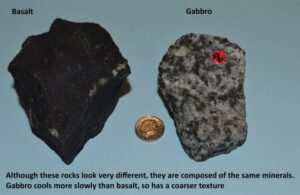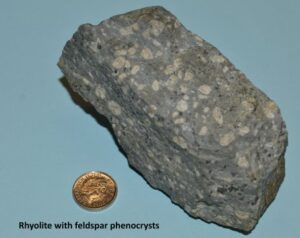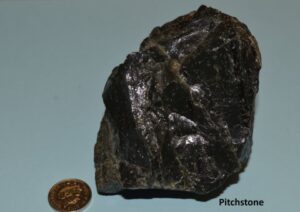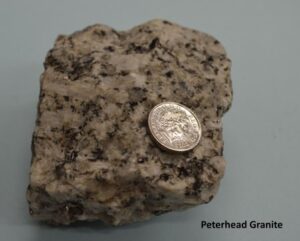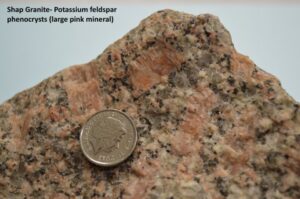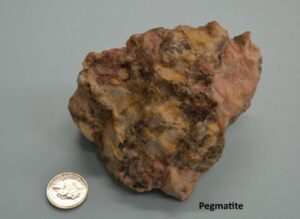Igneous Rocks
Igneous rocks are formed when molten material from within the Earth, called magma, cools down and solidifies forming crystals. They are thus characterised by an interlocking crystalline texture.
Igneous rocks can be classified in various ways:
1. Intrusive or extrusive. Intrusive (plutonic) rocks form when magma solidifies within the crust below the surface. It usually cools slowly and produces large crystals. Extrusive (volcanic) rocks form when magma erupts onto the surface of the Earth as lava flows, and usually cools quickly producing small crystals. It can also erupt explosively as ash. Sometimes molten lava remains for a long time in its magma chamber, allowing crystals of a specific mineral to form first, so that when the whole rock is finally solid it contains these large crystals, called phenocrysts, set in a ground mass of small crystals. A surface lava sometimes cools very quickly, allowing no time for crystals to grow; this results in the formation of a glass.
2. Acidic, intermediate or basic, depending on the amount of the elements of silica, SiO2, they contain. Acidic rocks such as granite, microgranite and rhyolite are rich in silica and contain the minerals quartz, feldspar and biotite among others. Basic rocks such as gabbro, dolerite and basalt are poor in silica and contain the minerals olivine, pyroxene, feldspar and/or quartz among others; they are also rich in the metals magnesium and iron and are often described as “mafic”. The intermediate rocks include diorite, microdiorite and andesite.
Basic magmas are very thin, flowing easily over the ground or down the side of their volcano, and they often form fire fountains, as in Hawaii, and fissure eruptions, as in Iceland. The gases they contain escape easily as they are erupting, leaving holes, called vesicles, in the rock.
Acidic magmas are very viscous, thick and sticky. These often erupt explosively, forming massive eruptions and pyroclastic flows, as happened at Vesuvius (79 AD) and Mount St Helen’s (1980).
In all the pictures below, the diameter of the coin is 22 mm.
Feldspars in granite are often pink or red due to the presence of iron in the crystal.
Maggie Donnelly

